Related Research Articles
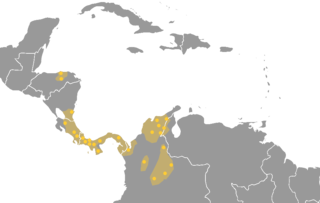
The Chibchan languages make up a language family indigenous to the Isthmo-Colombian Area, which extends from eastern Honduras to northern Colombia and includes populations of these countries as well as Nicaragua, Costa Rica, and Panama. The name is derived from the name of an extinct language called Chibcha or Muisca, once spoken by the people who lived on the Altiplano Cundiboyacense of which the city of Bogotá was the southern capital at the time of the Spanish Conquista. However, genetic and linguistic data now indicate that the original heart of Chibchan languages and Chibchan-speaking peoples might not have been in Colombia, but in the area of the Costa Rica-Panama border, where the greatest variety of Chibchan languages has been identified.
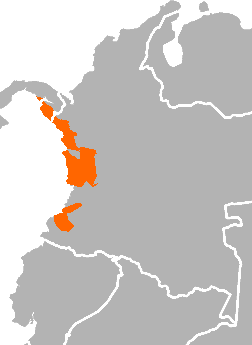
The Choco languages are a small family of Native American languages spread across Colombia and Panama.

This is a list of different language classification proposals developed for the Indigenous languages of the Americas. The article is divided into North, Central, and South America sections; however, the classifications do not correspond to these divisions.

Barbacoan is a language family spoken in Colombia and Ecuador.
Paezan may be any of several hypothetical or obsolete language-family proposals of Colombia and Ecuador named after the Paez language.
The Araucanian languages are a small language family of indigenous languages of the Americas spoken in central Chile and neighboring areas of Argentina. The living representatives of this family are Mapudungun and Huilliche, spoken respectively by the Mapuche and Huilliche people. These are usually considered divergent dialects of a single language isolate.
The Waorani (Huaorani) language, commonly known as Sabela is a vulnerable language isolate spoken by the Waorani people, an indigenous group living in the Amazon rainforest between the Napo and Curaray Rivers in Ecuador. A small number of speakers with so-called uncontacted groups may live in Peru.

Tucanoan is a language family of Colombia, Brazil, Ecuador, and Peru.
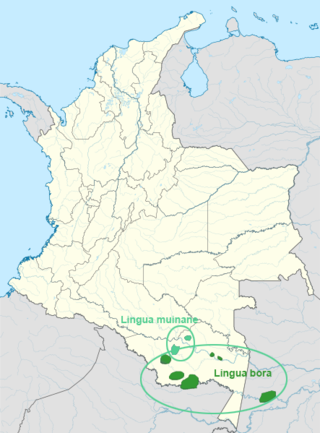
Boran is a small language family, consisting of just two languages.
Yuracaré is an endangered language isolate of central Bolivia in Cochabamba and Beni departments spoken by the Yuracaré people.
Katukinan (Catuquinan) is a language family consisting of two languages in Brazil, Katukina-Kanamarí and the perhaps moribund Katawixi. It is often not clear which names in the literature, which are generally tribal names and often correspond to dialects, refer to distinct languages. Indeed, they're close enough that some consider them all to be dialects of a single language, Kanamari.
Omurano is an unclassified language from Peru. It is also known as Humurana, Roamaina, Numurana, Umurano, and Mayna. The language was presumed to have become extinct by 1958, but in 2011 a rememberer was found who knew some 20 words in Omurano; he claimed that there were still people who could speak it.
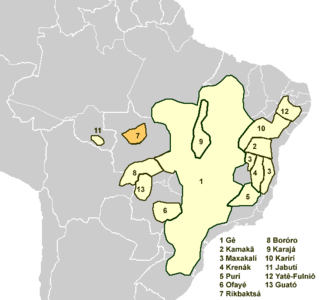
The Rikbaktsa language, also spelled Aripaktsa, Erikbatsa or Erikpatsa and known ambiguously as Canoeiro, is a language spoken by the Rikbaktsa people of Mato Grosso, Brazil, that forms its own branch of the Macro-Gê languages.
Andaqui is an extinct language from the southern highlands of Colombia. It has been linked to the Paezan or Barbacoan languages, but no connections have been demonstrated. It was spoken by the Andaqui people of Colombia.

Harakmbut or Harakmbet is the native language of the Harakmbut people of Peru. It is spoken along the Madre de Dios and Colorado Rivers, in the pre-contact country of the people. There are two dialects that remain vital: Amarakaeri (Arakmbut) and Watipaeri (Huachipaeri), which are reported to be mutually intelligible. The relationship between speakers of the two dialects is hostile.
Witotoan is a small language family of southeastern Colombia and the neighbouring region of Peru.
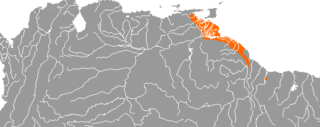
Warao is the native language of the Warao people. A language isolate, it is spoken by about 33,000 people primarily in northern Venezuela, Guyana and Suriname. It is notable for its unusual object–subject–verb word order. The 2015 Venezuelan film Gone with the River was spoken in Warao.

The Yaruro language is an indigenous language spoken by Yaruro people, along the Orinoco, Cinaruco, Meta, and Apure rivers of Venezuela. It is not well classified; it may be an isolate, or distantly related to the extinct Esmeralda language.
Taruma (Taruamá) is a divergent language of northeastern South America. It has been reported to be extinct several times since as far back as 1770, but Eithne Carlin discovered the last three speakers living in Maruranau among the Wapishana, and is documenting the language. The people and language are known as Saluma in Suriname.
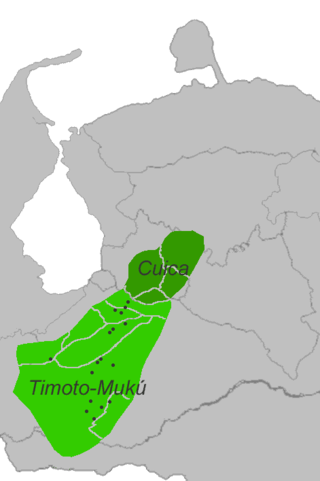
The Timotean languages were spoken in the Venezuelan Andes around what is now Mérida. It is assumed that they are extinct. However, Timote may survive in the so-far unattested Mutú (Loco) language, as this occupies a mountain village (Mutús) within the old Timote state.
References
- ↑ Jolkesky, Marcelo Pinho de Valhery (2016). Estudo arqueo-ecolinguístico das terras tropicais sul-americanas (Ph.D. dissertation) (2 ed.). Brasília: University of Brasília.
- ↑ Campbell, Lyle (2012). "Classification of the indigenous languages of South America". In Grondona, Verónica; Campbell, Lyle (eds.). The Indigenous Languages of South America. The World of Linguistics. Vol. 2. Berlin: De Gruyter Mouton. pp. 59–166. ISBN 978-3-11-025513-3.
- 1 2 Loukotka, Čestmír (1968). Classification of South American Indian languages . Los Angeles: UCLA Latin American Center.